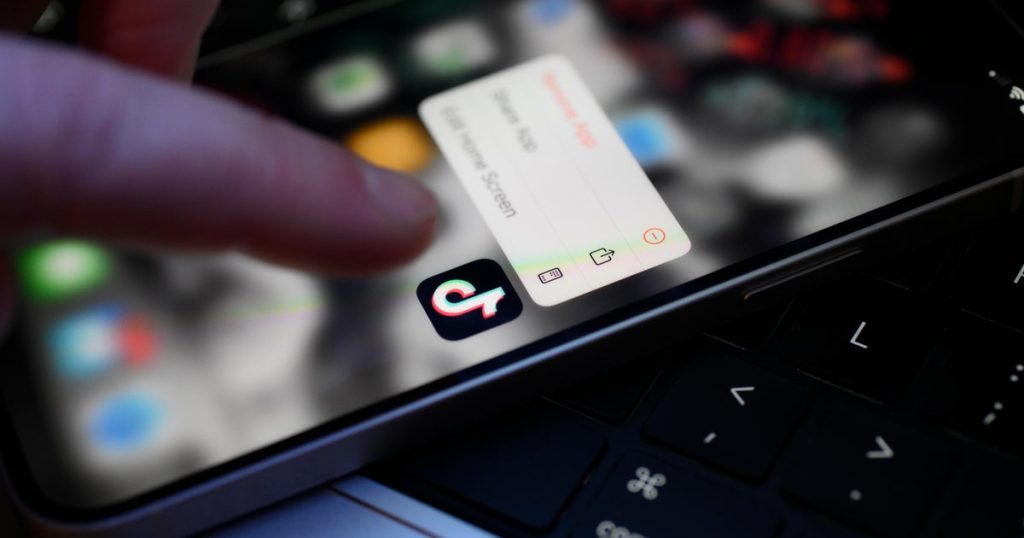In a significant turn of events, TikTok has voluntarily shut down its services in anticipation of a U.S. ban that took effect recently. As officials navigate through complicated regulations, users have been granted the ability to download their data before the platform goes offline completely. The sudden closure has led to a flurry of activity as users scramble to retain their content amidst uncertainty about the app’s future, particularly with new political leadership set to take charge.
| Article Subheadings |
|---|
| 1) TikTok Shuts Down Amid Legal Uncertainty |
| 2) User Data Download Options |
| 3) Implications of the Ban |
| 4) Statements from Officials |
| 5) Future of TikTok under New Administration |
TikTok Shuts Down Amid Legal Uncertainty
In a response to a newly enacted legal ban, TikTok decided to voluntarily suspend its services in the United States. The shutdown began on a Saturday evening when users received a notification stating, “Sorry, TikTok isn’t available right now. A law banning TikTok has been enacted in the U.S.” This closure follows a recent decision by the Supreme Court that upheld legislation prohibiting the popular social media platform from operating in the country. Users are experiencing the immediate impact of this shutdown, with many expressing frustration at the abrupt loss of access to the app they have relied on for creative expression and social connection.
User Data Download Options
Despite the ban, TikTok has allowed users to download their account data. Upon encountering the shutdown notification, users can click on a “Learn More” option that directs them to steps for data retrieval. The process involves logging into their TikTok account, selecting the types of data they wish to download, and submitting a request. This move is critical for users who have invested time in creating content, as it allows them to save their data before the app goes offline for good. This provision demonstrates TikTok’s attempt to mitigate user dissatisfaction, although many find the situation far from ideal.
Implications of the Ban
The banning of TikTok in the U.S. raises various concerns, particularly around freedom of expression, digital privacy, and the implications on user-generated content. The prohibition is not just a singular event; it marks a broader trend of regulatory scrutiny on social media platforms and their compliance with national security concerns. Many believe that the ban could set a precedent for how online platforms are managed and regulated moving forward. Social media analysts suggest that companies operating in the tech space need to take heed, as this may lead to stricter oversight and higher scrutiny of data practices.
Statements from Officials
Amidst the chaos, key political figures have expressed their opinions regarding the ban and the future of TikTok. President Joe Biden noted that his administration will not actively enforce the ban in the final hours of his presidency, placing the responsibility on the incoming administration of President-elect Donald Trump. Trump has promised to “save” TikTok and hinted at a potential extension for usage rights. White House press secretary Karine Jean-Pierre characterized TikTok’s assertion about being forced offline as a “stunt,” further complicating the narrative surrounding the app’s future in the U.S. political landscape.
Future of TikTok under New Administration
Looking ahead, the incoming Trump administration has signaled intentions to collaborate with TikTok to find a resolution. With Trump suggesting a possible 90-day extension for the platform, there remains a glimmer of hope for users anxious about losing access to the app permanently. However, TikTok itself has indicated that it may still adhere to the ban regardless of any temporary reprieve, asserting that unless definitive assurances come from the new administration, they will cease operations on January 19. This ongoing uncertainty leaves users in a precarious position as they await further clarity on the future of their favorite social media platform.
| No. | Key Points |
|---|---|
| 1 | TikTok has voluntarily suspended its U.S. services in anticipation of a legal ban. |
| 2 | Users can download their data before the complete shutdown of the app. |
| 3 | The legal ban emphasizes concerns regarding digital privacy and the broader implications for social media. |
| 4 | Political figures are divided over the ban, with statements from both the Biden and Trump administrations. |
| 5 | The future of TikTok remains uncertain amid ongoing discussions and potential extensions from the incoming administration. |
Summary
The recent developments surrounding TikTok in the U.S. highlight the ongoing tensions between technology, regulation, and user rights. As the social media platform faces uncertain waters, users are reminded of the fragility of digital spaces in the face of legal and political disputes. The situation requires careful monitoring, as its implications could reshape the landscape of social media regulation and impact millions of users across the nation.
Frequently Asked Questions
Question: Why was TikTok banned in the U.S.?
TikTok was banned in the U.S. due to concerns over user data privacy and national security, prompting a Supreme Court decision supporting the ban.
Question: How can users download their data from TikTok?
Users can download their data by logging into their account, selecting “download your data” from the settings, and following the steps provided to request their information.
Question: What happens to TikTok now that there is a change in administration?
With a new administration taking charge, there are hints of a potential extension for TikTok’s operations, but the app has also indicated they might go offline permanently unless assured otherwise.


